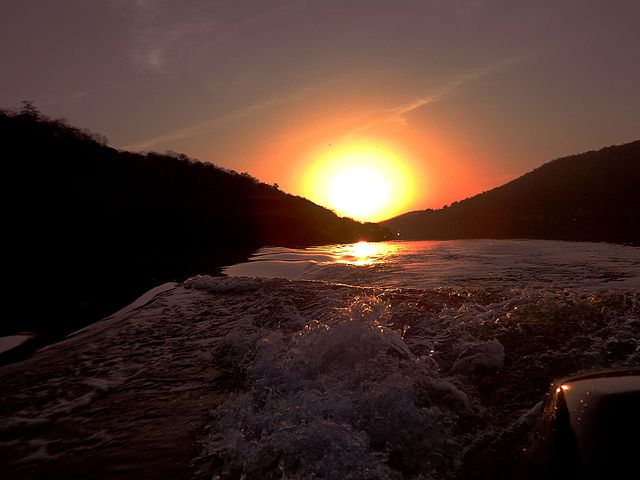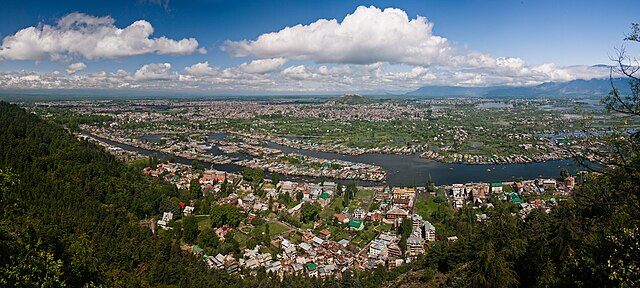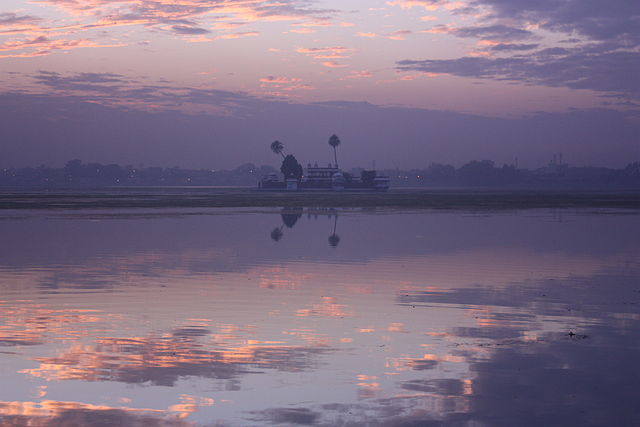Have you ever wondered what it’s like to experience the weather in Kota, Rajasthan? Whether you’re planning a trip, relocating, or simply curious about this vibrant city’s climate, understanding Kota’s temperature patterns is key to making the most of your time there. Kota, known for its educational institutions and rich cultural heritage, experiences a semi-arid climate with distinct seasons that shape daily life. From scorching summers to chilly winters, the city’s weather is a rollercoaster that keeps both residents and visitors on their toes. In this guide, I’ll walk you through everything you need to know about Kota’s temperature, including seasonal trends, practical tips, and how the climate influences the city’s lifestyle. Let’s dive in!
Why Kota’s Temperature Matters
Kota’s weather isn’t just small talk—it’s a defining factor in how people live, work, and play. Located in Rajasthan, India, Kota sits along the Chambal River, and its climate is heavily influenced by its semi-arid geography. The temperature here swings dramatically across seasons, impacting everything from agriculture to tourism. For students flocking to Kota for its famed coaching centers, the weather can affect study schedules and outdoor activities. For travelers, it determines the best time to visit historical sites like the Kota Garh Palace. Understanding the temperature patterns helps you plan better, whether you’re packing light for summer or bundling up for winter.
The Basics of Kota’s Climate
Kota experiences a hot semi-arid climate, classified as BSh under the Köppen climate system. This means hot summers, moderate monsoons, and relatively cool winters. The city’s location in northern India, away from coastal influences, leads to extreme temperature variations. Daytime highs in summer can feel like stepping into an oven, while winter nights can be surprisingly crisp. Knowing this, you can better prepare for the city’s weather quirks, whether you’re a local or just passing through.
Kota’s Seasonal Temperature Breakdown

Kota’s weather is like a book with three distinct chapters: summer, monsoon, and winter. Each season brings its own flavor, challenges, and opportunities. Let’s break down what you can expect from the thermometer throughout the year.
Summer: The Sizzling Months (March to June)
Summer in Kota is no joke. From March to June, temperatures often soar between 35°C and 45°C (95°F to 113°F), with May being the hottest month. The sun blazes relentlessly, and stepping outside feels like walking into a furnace. Humidity levels are low, but the dry heat can be exhausting. Locals rely on air conditioners, coolers, and plenty of hydration to cope. If you’re visiting during this time, lightweight cotton clothes and sunscreen are your best friends. Outdoor activities are best scheduled for early mornings or late evenings to avoid the midday scorch.
Tips for Surviving Kota’s Summer Heat
How do you beat the summer heat in Kota? First, stay hydrated—carry a water bottle everywhere. Opt for loose, breathable clothing, preferably in light colors to reflect the sun. If you’re a student, find air-conditioned study spaces or libraries to stay productive. For tourists, plan indoor activities like visiting museums or shopping complexes during the hottest parts of the day. And don’t forget to indulge in local cooling treats like lassi or sugarcane juice—they’re lifesavers!
Monsoon: A Refreshing Break (July to September)
When the monsoon arrives in July, it’s like the city lets out a collective sigh of relief. Temperatures drop to a more bearable 25°C to 35°C (77°F to 95°F), and the rains bring much-needed respite from the summer heat. However, the humidity spikes, making the air feel heavy. Rainfall in Kota is moderate compared to coastal cities, averaging 700–800 mm annually. The Chambal River swells, and the surrounding greenery comes alive, making it a picturesque time to visit. But beware of occasional waterlogging in low-lying areas!
Monsoon in Kota is a mixed bag—refreshing yet unpredictable. Carry an umbrella or raincoat, as sudden showers can catch you off guard. Waterproof shoes are a must to avoid soggy feet. If you’re exploring the city, visit outdoor attractions like the Seven Wonders Park or Kishore Sagar Lake right after the rain, when the air is cool and the scenery vibrant. Just keep an eye on weather updates to avoid getting stuck in a downpour.
Winter: Cool and Pleasant (October to February)
Winter in Kota is a breath of fresh air—literally. From October to February, temperatures range from 10°C to 25°C (50°F to 77°F), with January being the coldest month. Nights can dip to single digits, so a light jacket or sweater is essential. This is the most comfortable season for outdoor activities, whether you’re sightseeing or attending local festivals. The clear skies and mild days make it the peak tourist season, so expect more crowds at popular spots.
Making the Most of Kota’s Winter
Winter is the perfect time to explore Kota’s outdoor attractions. Visit the Kota Barrage or take a boat ride on the Chambal River without breaking a sweat. The cooler weather also makes it ideal for attending cultural events or exploring the city’s bustling markets. For students, this is the best time for outdoor study groups or breaks in local cafes. Just don’t forget a shawl for those chilly evenings!
How Temperature Shapes Kota’s Lifestyle

Kota’s temperature doesn’t just dictate what you wear—it shapes the city’s rhythm. In summer, life slows down during the day, with shops and markets buzzing in the cooler evenings. Monsoon brings a festive vibe, with locals enjoying street food under cloudy skies. Winter sees a surge in outdoor activities, from picnics to cultural fairs. The climate also influences the academic calendar, with coaching centers adjusting schedules to accommodate the heat or cold. Understanding these patterns helps you blend into the city’s flow, whether you’re studying or sightseeing.
Impact on Students
Kota is India’s coaching capital, hosting thousands of students preparing for competitive exams like JEE and NEET. The extreme summer heat can make long study hours grueling, so many coaching centers invest in air-conditioned classrooms. In winter, students enjoy outdoor breaks, which boost morale during intense prep seasons. Monsoon, however, can disrupt schedules due to occasional flooding, so students often rely on online classes during heavy rains.
Influence on Tourism
Tourism in Kota peaks during winter when the weather is ideal for exploring forts, palaces, and gardens. Summer sees fewer visitors, but indoor attractions like the City Palace museum remain popular. Monsoon draws nature lovers who want to see the lush greenery around the Chambal River. Timing your visit based on temperature can make or break your experience, so plan wisely!
Kota’s Temperature Trends Over Time
Has Kota’s climate always been this extreme? Not quite. Over the past few decades, temperatures in Kota have shown a slight upward trend, likely due to global warming. Summers are getting hotter, with heatwaves becoming more frequent. Monsoons have become less predictable, with erratic rainfall patterns. Winters, while still pleasant, are shorter than they used to be. These shifts affect agriculture, water availability, and even urban planning in the city. Staying informed about these trends can help you prepare for future visits or long-term stays.
Climate Change and Kota
Climate change is leaving its mark on Kota. Rising summer temperatures strain the city’s power grid as demand for cooling spikes. Erratic monsoons challenge farmers who rely on consistent rainfall. The local government is investing in sustainable practices, like rainwater harvesting, to mitigate these effects. As a visitor or resident, supporting eco-friendly initiatives—like using public transport or reducing water waste—can make a difference.
Practical Tips for Dealing with Kota’s Temperature
Navigating Kota’s weather is like playing a game of chess—you need strategy. Here are some practical tips to stay comfortable year-round:
- Hydration is key: Carry water at all times, especially in summer.
- Dress smart: Opt for cotton in summer, waterproof gear in monsoon, and layers in winter.
- Plan activities wisely: Schedule outdoor plans for early mornings or evenings in summer, and daytime in winter.
- Stay updated: Check weather forecasts to avoid surprises, especially during monsoon.
- Embrace local solutions: Try cooling drinks like jaljeera or warm chai in winter to blend in with local culture.
Best Time to Visit Kota Based on Temperature

So, when’s the best time to visit Kota? If you’re chasing pleasant weather, aim for October to February. The mild temperatures make it perfect for exploring the city’s forts, temples, and riverside spots. If you don’t mind the heat and want fewer crowds, summer can be a budget-friendly option—just be prepared for the scorch. Monsoon is great for nature lovers, but pack for rain. Whatever your preference, Kota’s charm shines through every season.
How to Check Kota’s Temperature
Want to stay ahead of Kota’s weather? Use reliable weather apps like AccuWeather or the Indian Meteorological Department’s website for accurate forecasts. Local news channels also provide daily updates. For real-time insights, ask locals—they often have a knack for predicting sudden changes based on experience. Pro tip: Check the forecast a week in advance if you’re planning outdoor activities or travel.
Conclusion
Kota’s temperature is more than just numbers on a thermometer—it’s a dynamic force that shapes the city’s culture, lifestyle, and appeal. From the blazing summers to the refreshing monsoons and crisp winters, each season offers a unique experience. Whether you’re a student grinding through exam prep, a tourist exploring historical gems, or a local navigating daily life, understanding Kota’s climate helps you make the most of your time. By planning around the weather, dressing smart, and embracing local tips, you can turn Kota’s temperature challenges into opportunities for adventure. So, what are you waiting for? Pack your bags, check the forecast, and get ready to experience Kota’s vibrant climate firsthand!
Frequently Asked Questions (FAQs)
1. What is the hottest month in Kota?
May is typically the hottest month in Kota, with temperatures often reaching 40°C to 45°C (104°F to 113°F). Stay hydrated and avoid midday outdoor activities during this time.
2. Does Kota experience extreme cold in winter?
No, Kota’s winters are mild, with temperatures ranging from 10°C to 25°C (50°F to 77°F). Nights can be chilly, but extreme cold is rare.
3. How much rainfall does Kota get during the monsoon?
Kota receives moderate rainfall, about 700–800 mm annually, from July to September. Expect occasional heavy showers but not as intense as coastal regions.
4. Is it safe to visit Kota during the monsoon?
Yes, but be cautious of waterlogging in some areas. Carry rain gear and check weather updates to plan your outings.
5. What’s the best season for outdoor activities in Kota?
Winter (October to February) is ideal for outdoor activities due to pleasant temperatures and clear skies, perfect for sightseeing and exploring.

